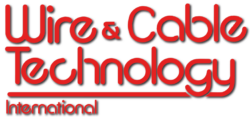Wire Breaks and the Role of Drawing Machine Operators
Wire breaks can occur during the wire drawing process. They are the undesirable result of unfavorable interactions of forces, tensions and other physical phenomena in the wire material which exceed its tensile strength. The consequences are increased machine down times and scrap production.
One of the main types of wire breaks are called “cup-andcone” breaks because one end of the broken wire is conelike and the other end is deepened like a cup or like a crater. These breaks usually occur when the wire passes through a drawing die


















